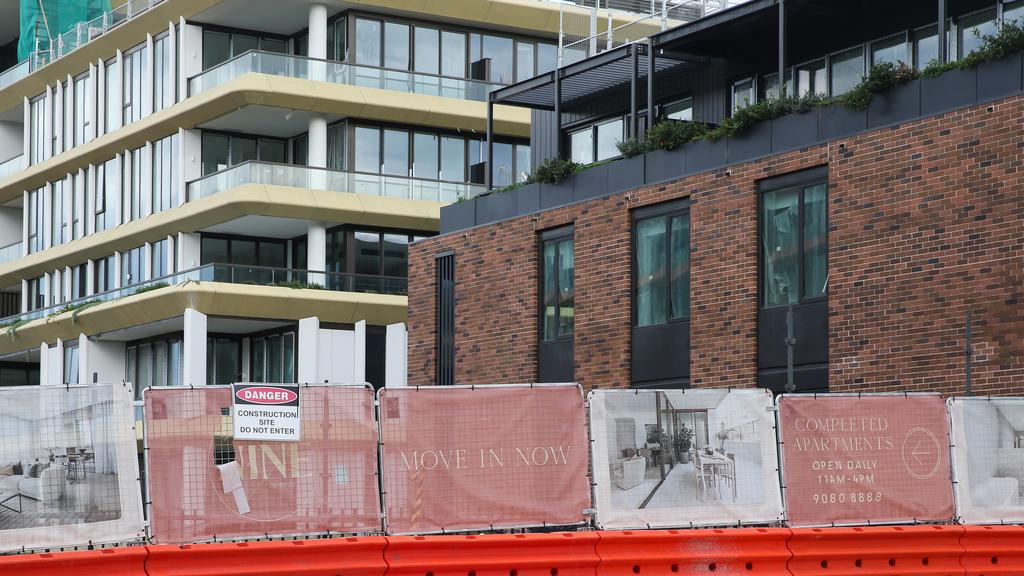Warburg Pincus stakes claim in private credit with $500m MA Financial tie-up

A construction site for an apartment complex in Sydney. Picture: Gaye Gerard/NewsWire
Global investment firm Warburg Pincus has become the latest player to back the country’s hot private creditor sector as banks pull back from lending to property developers.
The group has committed $490m, via its Warburg Pincus Asia Real Estate Fund, to the $1bn real estate credit vehicle unveiled by the listed MA Financial earlier this year.
The move is designed to address the persistent funding gap for developers as they seek to build new sites as the supply of new housing falls behind. The need for alternative sources of capital has prompted a boom in private players getting into the market.
Local players include funds manager HMC Capital, led by former UBS banker David Di Pilla, which is aiming to set up a $5bn private credit business and bought specialist commercial real estate lender and funds house Payton Capital in May.
Real estate funds manager MaxCap Group, which is backed by US funds heavyweight Apollo Global Management, has also expanded to more than $8bn of funds, and is optimistic that it will benefit from the estimated $200bn private credit boom, while also downplaying the sector’s overall systemic risk.
MA Financial has about $4bn worth of real estate activity and the firm will originate and manage real estate credit facilities for local developers and projects under the new tie-up. Warburg Pincus is already one of the largest real estate investors in Asia, and is co-led by Takashi Murata, co-head of Warburg Pincus Asia real estate, who has 25 years of experience in Asia Pacific real estate.
Warburg Pincus has a network in Australia through supporting its portfolio companies including warehouse giant ESR and self-storage company StorHub, as well as through its investments in joint ventures. These include one with Hale Capital Partners focusing on last mile logistics real estate and another with KIO focusing on the Australian build-to-rent sector.
Mr Murata is bullish on the prospects of Australia’s housing market.
“We have built a strong conviction in the secular tailwinds of Australia’s residential market, driven by the immigration-led population growth and the under-supply of housing primarily due to a tight credit environment and higher construction costs,” he said.
“Over the next five years, the cumulative dwelling shortage is projected to reach approximately 254,000 units, alongside an anticipated 30 per cent increase in annual population growth,” he said.
Mr Murata said with traditional financiers tightening credit, there is an estimated $US37bn ($55bn) funding gap that needs to be addressed. “The new vehicle will help meet the demand from sophisticated borrowers as Australia tackles its nationwide housing shortage,” he said.
The new vehicle is well-positioned to capture financing opportunities in Australia’s residential build-to-sell sector.
MA Financial joint chief executive Julian Biggins said the Warburg Pincus commitment, and encouraging responses received from like-minded global investors for the strategy, meant the firm was optimistic about the vehicle’s potential.
“We believe that it is well-poised to help address the housing shortage challenges in Australia while also providing compelling opportunities for investors,” he said.







